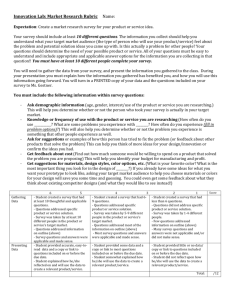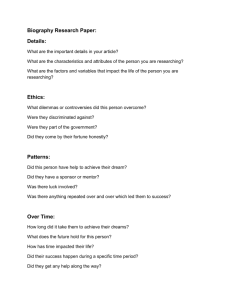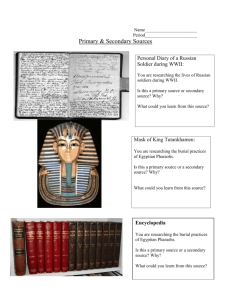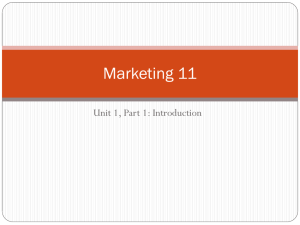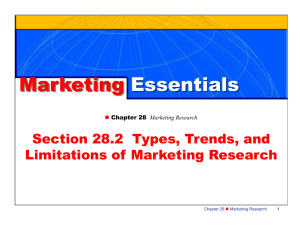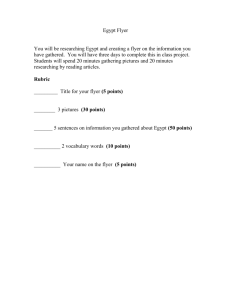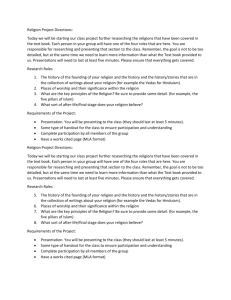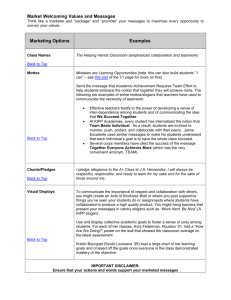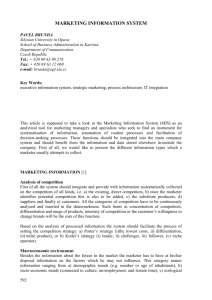marketing – information management
advertisement
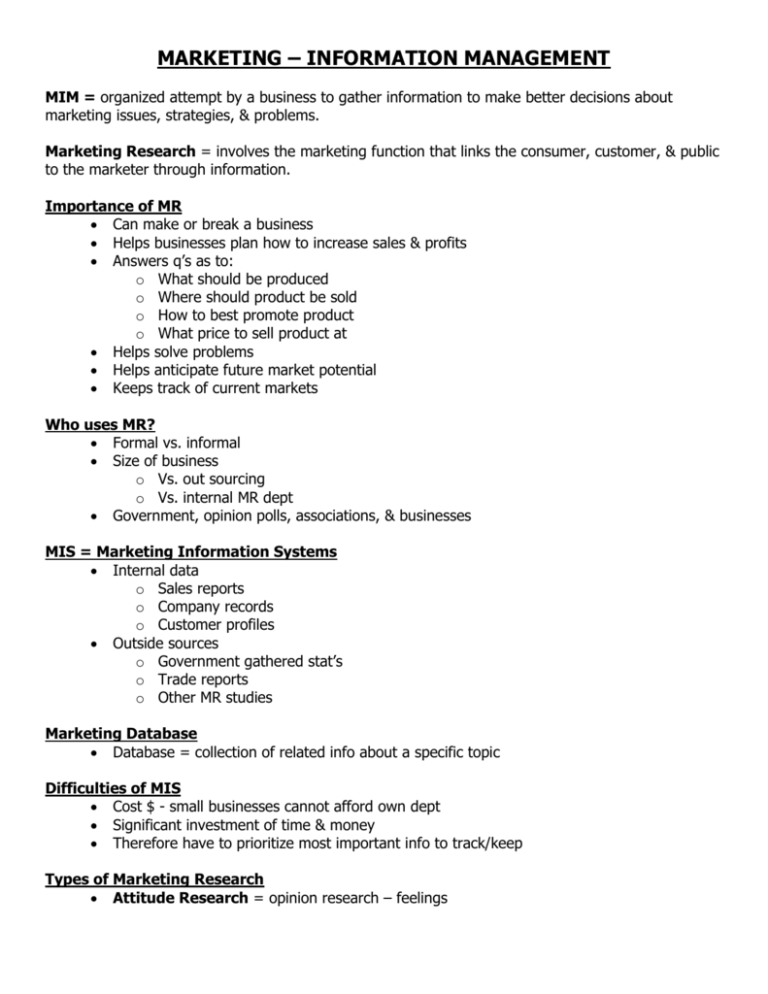
MARKETING – INFORMATION MANAGEMENT MIM = organized attempt by a business to gather information to make better decisions about marketing issues, strategies, & problems. Marketing Research = involves the marketing function that links the consumer, customer, & public to the marketer through information. Importance of MR Can make or break a business Helps businesses plan how to increase sales & profits Answers q’s as to: o What should be produced o Where should product be sold o How to best promote product o What price to sell product at Helps solve problems Helps anticipate future market potential Keeps track of current markets Who uses MR? Formal vs. informal Size of business o Vs. out sourcing o Vs. internal MR dept Government, opinion polls, associations, & businesses MIS = Marketing Information Systems Internal data o Sales reports o Company records o Customer profiles Outside sources o Government gathered stat’s o Trade reports o Other MR studies Marketing Database Database = collection of related info about a specific topic Difficulties of MIS Cost $ - small businesses cannot afford own dept Significant investment of time & money Therefore have to prioritize most important info to track/keep Types of Marketing Research Attitude Research = opinion research – feelings Market Research = info related to marketing a good/service o Sales Forecasting = project future sales o Economic Forecasting = predict economy future (city, county, state, nation, etc) Media Research = media selection & frequency, measures effectiveness of advertising (media mix) o Researching print advertisements o Researching broadcast media o Researching online advertising Product Research = evaluates product design, packaging, usage, consumer acceptance o New product acceptance o Existing product research Trends in MR Technology advancement Global marketplace Limitations of MR Time & $ limit how much info can be gathered Info limited as it is not a guarantee MR can still be valuable as an indicator, when weighed properly Introduction to Marketing Research Market research and marketing research are often confused. 'Market' research is simply research into a specific market. It is a very narrow concept. 'Marketing' research is much broader. It not only includes 'market' research, but also areas such as research into new products, or modes of distribution such as via the Internet. Here are a couple of definitions: "Marketing research is the function that links the consumer, customer, and public to the marketer through information - information used to identify and define marketing opportunities and problems; generate, refine, and evaluate marketing actions; monitor marketing performance; and improve understanding of marketing as a process. Marketing research specifies the information required to address these issues, designs the methods for collecting information, manages and implements the data collection process, analyzes, and communicates the findings and their implications." "Marketing research is about researching the whole of a company's marketing process." Palmer (2000). This explanation is far more straightforward i.e. marketing research into the elements of the marketing mix, competitors, markets, and everything to do with the customers. Sources of Data - Primary and Secondary There are two main sources of data - primary and secondary. primary research is conducted from scratch. It is original and collected to solve the problem in hand. secondary research, also known as desk research, already exists since it has been collected for other purposes. Primary marketing research is collected for the first time. It is original and collected for a specific purpose, or to solve a specific problem. It is expensive, and time consuming, but is more focused than secondary research. There are many ways to conduct primary research. We consider some of them: 1. Interviews 2. Mystery shopping 3. Focus groups 4. Projective techniques 5. Product tests 6. Diaries 7. Omnibus Studies Secondary marketing research, or desk research, already exist in one form or another. It is relatively cheap, and can be conducted quite quickly .However, it tends to have been collected for reasons other than for the problem or objective at hand. So it may be untargeted, and difficult to use to make comparisons (e.g. financial data gather on Australian pensions will be different to data on Italian pensions). There are a number of such sources available to the marketer, and the following list is by no means conclusive: Trade associations National and local press Industry magazines National/international governments Websites Informal contacts Trade directories Published company accounts Business libraries Professional institutes and organisations Omnibus surveys Previously gathered marketing research Census data Public records ** The better you know your target market, the easier the decisions for the 4 P’s **
